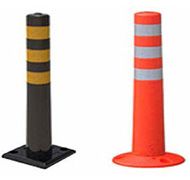Introduction
Overview of the problem
Overview of the problem: Los Angeles has a high number of traffic accidents and fatalities, with many occurring in residential areas. Speeding is a major contributing factor to these accidents, and traditional traffic calming measures such as stop signs and speed limits have not been effective in reducing speeds. This has led to an increased interest in the use of speed bumps as a way to improve safety on residential streets. However, there are concerns about the impact of speed bumps on emergency vehicles and the potential for noise and vibration for residents.
Importance of road safety
Road safety is of utmost importance in any city, especially in a bustling metropolis like Los Angeles. With a high volume of traffic and pedestrians, accidents can happen at any time. Speed bumps are an effective way to improve road safety by slowing down drivers and reducing the risk of collisions. By installing speed bumps in strategic locations, such as school zones and residential areas, drivers are forced to slow down and pay closer attention to their surroundings. This not only reduces the likelihood of accidents but also promotes safer driving habits in the community. Therefore, it is crucial to prioritize road safety measures like speed bumps to ensure the safety of all road users in Los Angeles.
What are speed bumps?
Definition of speed bumps
Speed bumps, also known as speed humps, are traffic calming devices that are designed to slow down vehicles. They are typically made of asphalt or concrete and are raised sections of the road that are between 3 to 4 inches high and 12 to 14 feet wide. The purpose of speed bumps is to force drivers to slow down and drive at a safe speed, especially in areas where there are pedestrians or other hazards. Speed bumps are commonly used in parking lots, school zones, and residential areas to improve safety and reduce the risk of accidents.
Types of speed bumps
There are several types of speed bumps that can be installed in Los Angeles to improve safety on the roads. The most common type is the traditional speed hump, which is a raised section of pavement that spans the width of the road. Another option is the speed cushion, which is similar to the speed hump but has a gap in the middle to allow emergency vehicles to pass through without slowing down. Speed tables are another option, which are longer and flatter than speed humps and are designed to slow down traffic over a larger area. Finally, there are also rumble strips, which are raised sections of pavement that create a vibration and noise when vehicles drive over them, alerting drivers to slow down. Each type of speed bump has its own advantages and disadvantages, and the choice of which to install will depend on the specific needs of each location.
How speed bumps work
Speed bumps are designed to slow down vehicles and reduce their speed. They are typically made of rubber, asphalt, or concrete and are placed on roads where speeding is a problem. When a vehicle drives over a speed bump, it must slow down to navigate the bump safely. This reduction in speed can help prevent accidents and improve safety for pedestrians and other drivers. Speed bumps are especially effective in residential areas, school zones, and parking lots where there is a high volume of foot traffic. However, it is important to note that speed bumps can also cause discomfort for passengers and damage to vehicles if not properly designed and maintained.
Benefits of speed bumps
Reducing speed and accidents
Speed bumps are an effective way to reduce speed and accidents on Los Angeles roads. By forcing drivers to slow down, speed bumps can prevent collisions and reduce the severity of accidents that do occur. Studies have shown that speed bumps can reduce speeds by up to 10 miles per hour, which can make a significant difference in the likelihood of accidents. Additionally, speed bumps can help to calm traffic in residential areas, making them safer for pedestrians and cyclists. Overall, the use of speed bumps can be an important tool in improving safety on Los Angeles roads.
Improving pedestrian safety
Improving pedestrian safety is a crucial aspect of traffic management in Los Angeles. Speed bumps can play a significant role in reducing the risk of accidents involving pedestrians. By slowing down vehicles, speed bumps give drivers more time to react to pedestrians crossing the road. Additionally, speed bumps can discourage drivers from speeding in areas with high pedestrian traffic, making it safer for people to walk around. Installing speed bumps in areas with high foot traffic, such as school zones and residential areas, can significantly improve pedestrian safety in Los Angeles.
Encouraging safe driving behavior
Encouraging safe driving behavior is crucial to reducing accidents and injuries on Los Angeles roads. Speed bumps are one way to encourage drivers to slow down and drive more cautiously. By forcing drivers to slow down, speed bumps can help prevent accidents caused by speeding, reckless driving, and other dangerous behaviors. Additionally, speed bumps can help reduce noise pollution and improve the overall quality of life in neighborhoods by discouraging excessive speeding and aggressive driving. To encourage safe driving behavior, it’s important to install speed bumps in strategic locations where they will have the greatest impact on reducing accidents and improving safety.
Current situation in Los Angeles
Statistics on accidents and fatalities
According to the Los Angeles Department of Transportation, there were 236 traffic fatalities in the city in 2019. This is a 32% increase from the previous year and the highest number of traffic deaths in over a decade. Additionally, there were 54,000 reported traffic collisions in 2019, resulting in over 14,000 injuries. These statistics highlight the urgent need for measures to improve road safety in Los Angeles, and speed bumps can play a crucial role in reducing the number of accidents and fatalities on the city’s streets.
Challenges in implementing road safety measures
Despite the benefits of speed bumps in improving road safety, there are several challenges in implementing these measures in Los Angeles. One of the main challenges is the cost of installation and maintenance. Speed bumps require regular upkeep and repair, which can be expensive for the city. Additionally, there may be resistance from residents who live near proposed speed bump locations, as they may be concerned about noise and inconvenience. Finally, there is the issue of enforcement, as speed bumps alone cannot prevent all instances of reckless driving. Addressing these challenges will be crucial in ensuring that speed bumps are an effective tool for improving road safety in Los Angeles.
How speed bumps can improve safety in Los Angeles
Examples of successful implementation in other cities
Many cities across the United States have successfully implemented speed bumps to improve safety on their streets. For example, in Portland, Oregon, the city installed speed bumps on a residential street that had a high rate of speeding and accidents. The speed bumps reduced the average speed of vehicles by 10 miles per hour and decreased the number of accidents by 50%. Similarly, in New York City, the installation of speed bumps in school zones led to a 60% reduction in speeding and a 23% reduction in injuries to pedestrians. These successful implementations demonstrate the effectiveness of speed bumps in improving safety on city streets.
Potential locations for speed bumps in Los Angeles
There are several potential locations for speed bumps Los Angeles that could greatly improve safety for both drivers and pedestrians. One area that could benefit from speed bumps is residential neighborhoods with high volumes of traffic. Speed bumps could help slow down drivers and reduce the risk of accidents, especially in areas where children are present. Additionally, speed bumps could be installed near schools, parks, and other areas where pedestrians are likely to be present. By reducing the speed of vehicles in these areas, speed bumps could help prevent accidents and make these areas safer for everyone.
Costs and funding options
Costs and funding options for implementing speed bumps in Los Angeles can vary depending on the location and size of the project. The cost of a single speed bump can range from $50 to $500, and the installation cost can range from $100 to $500 per bump. However, the benefits of reducing accidents and increasing safety for pedestrians and drivers can outweigh the costs. Funding options for speed bumps can come from the city budget, grants, or community fundraising efforts. In some cases, residents may be required to pay for the installation of speed bumps on their street. Overall, the cost of implementing speed bumps in Los Angeles can be manageable with proper planning and funding.
Conclusion
Summary of key points
In summary, speed bumps have proven to be an effective tool in improving safety on Los Angeles roads. They help to slow down drivers, reduce the risk of accidents, and create a safer environment for pedestrians and cyclists. While some may argue that speed bumps can be inconvenient or cause damage to vehicles, the benefits they provide in terms of safety far outweigh any potential drawbacks. By implementing more speed bumps in high-risk areas, Los Angeles can continue to make progress towards reducing traffic-related injuries and fatalities.
Call to action for improving road safety in Los Angeles
To truly improve road safety in Los Angeles, it is important for community members to get involved and advocate for change. This can include contacting local government officials and urging them to implement more speed bumps in high-risk areas, as well as supporting initiatives that promote safe driving habits and education. Additionally, individuals can take action by being responsible drivers themselves, following traffic laws and being mindful of pedestrians and cyclists on the road. By working together and taking a proactive approach, we can make our streets safer for everyone.






